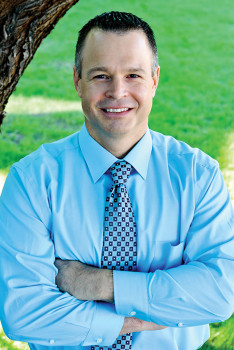Editor’s Note: “2 Your Health†is a new column in the PebbleCreek Post dedicated to health issues. Each month different doctors and or medical associations, from varying specialties, will be writing on issues of importance. Articles are based on experiences and independent research conducted by the doctors or medical associations. We encourage anyone considering changing medications and or altering medical therapy, as a result of information contained in these articles, to consult your doctor first. Robson Publishing, a division of Robson Communities, Inc. is not liable for information contained in these articles.

Ryann Roberts, DPT
Ryann Roberts, DPT
Ahh—retirement – the time to finally enjoy your hobbies! Golf, pickleball, tennis, arts and crafts – PebbleCreek has them all. Some are active, some not. Regardless, you need to stay active to continue enjoying your retirement. Activity and proper nutrition is proven to increase the quality of your life; however, age is also a known limiting factor in physical activity, including the length of time to recover from physical activity. Your body will not recover as fast anymore, so here are pain prevention strategies that will help you maintain a high quality of life. You also might want to look at products that can negate pain in muscles and joints without looking at pharmaceuticals, instead have a look at the best cbd for athletes reviews, if it can leave them pain-free after a rigorous workout, it can work for you too.
First, a proper warm up is recommended before moderate cardio or strength training activities which should be performed three or four times per week. Your joints, muscles and heart cannot go from 0 to 60 as it did earlier in life. You need to slowly start moving your body to increase your heart rate and blood flow. Start with small, easy motions before pushing your joints into larger motions necessary to perform the specific activity. Once the joints are warm, perform three or four reps of a static stretch, holding for 20 to 30 seconds.
Form is another very important aspect of pain prevention in the aging population. The younger athlete gets away with poor technique because their bodies will recover and heal faster. In the older population, learning the correct technique/form for all activities will increase your longevity. You can find routines and examples of exercises for your specific sport anywhere on the Internet.
The hardest part of becoming an older athlete is leaving your ego at the door. Know your limits and do not attempt a physical activity that is out of your range. You were once able to show up and just play, but you now need to be smarter and arrive earlier to gradually increase your intensity. Your current 100 percent effort is not the same from your 20s. If you want to remain healthy and active, do not work through pain – train smart and know your limits!
Overuse injuries and pain occur when you repeat the same exercises and activities. Repetitive activities add more and more stress to those same joints. Therefore, try to find different activities you enjoy to allow your muscles to work in different ways and rest while staying active.
The likelihood of not having some pain as an aging athlete is very slim. Listen to your body. If something hurts, and is not just sore, or when soreness becomes a nagging issue that encroaches on other areas of your life, it’s time to reach out for medical advice. Waiting just doesn’t work. Just remember, nothing bad happens when you have issues checked out too early. On the other hand, if you wait too long, pain can worsen and you may miss more activity.
At AZOPT we offer complimentary injury screens. We listen to your symptoms and address your concerns, giving you the most appropriate path that keeps you active and enjoying your community. Be active. Stay active. And don’t be afraid to contact AZOPT at 623-242-6908 with questions.
